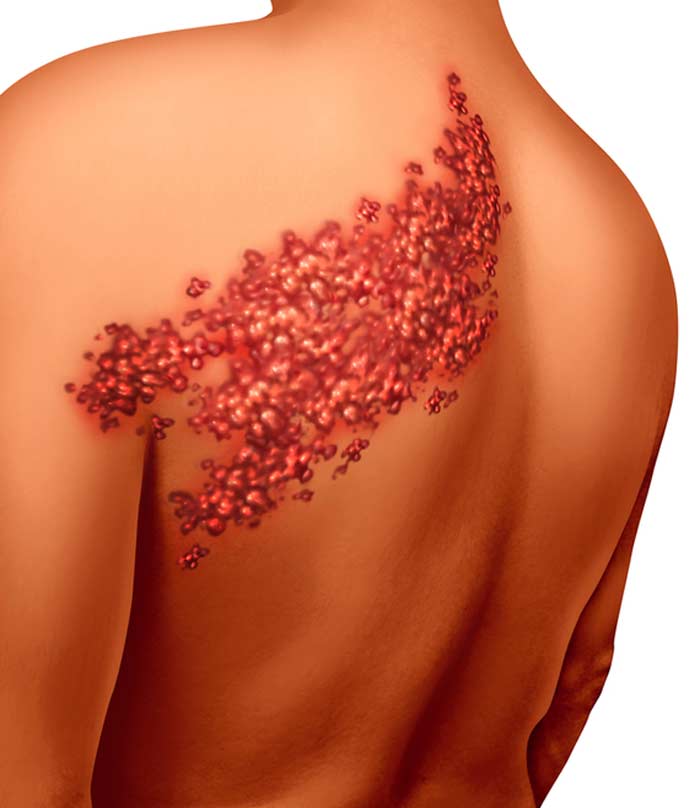
Postherpetic neuralgia can occur in people who have shingles.
Shingles causes a painful rash and it is a type of viral infection. This type of neuralgia affects the skin and nerve fibers, causing a long-lasting burning pain that remains present after the shingles blisters and rash are gone.
Causes
Those who have had chickenpox may develop shingles due to the virus staying in their body after the chickenpox heal. If a patient experiences a suppressed immune system, shingles can occur if the virus reactivates. This is also possible as people get older.
During a shingles outbreak, if nerve fibers experience damage, postherpetic neuralgia is possible. The fibers are not able to send messages to the brain from the skin if they are damaged. The messages essentially get exaggerated and confused. As a result, the severe, chronic pain can occur and last for months. In some cases, people experience the pain for years.


Symptoms
People of all ages can experience this condition, but it is typically seen in those over age 60. Where the shingles outbreak was on the skin is typically where postherpetic neuralgia presents. The symptoms may include:
- After the rash from shingles heals, the pain associated with postherpetic neuralgia lasts at least three additional months. It is often described as burning, jabbing, aching, sharp or deep.
- While less common, some people with this condition can experience numbness and itching.
- Patients may be sensitive to even light touches.
Depending on the pain level and how long this condition lasts, there are certain complications that patients may experience:
- Fatigue
- Appetite loss
- Depression
- Sleeping troubles
- Trouble concentrating
Diagnosis
In most cases, the doctor will examine the patient’s medical history and skin to make an accurate diagnosis. They may put gentle pressure on certain areas to see where the affected area’s borders are.
Treatment
This condition typically requires several treatment options to reduce the patient’s pain and discomfort. Lidocaine patches are an option for the pain. These patches are like a bandage since they stick to the skin. They can typically be cut to size for smaller areas. The patch contains lidocaine which alleviates the pain. The relief is temporary.
There are skin patches that contain capsaicin. The healthcare provider will usually put a numbing medicine on the painful skin areas before the patch. Once the patch is in place, it is left on for at least two hours. For some people, the relief lasts as long as three months.
Anticonvulsant medicines may help to reduce the pain. They act on the central nervous system to stabilize abnormal electrical activity. Doctors might prescribe pregabalin or gabapentin.
Duloxetine, nortriptyline and venlafaxine are antidepressants that might benefit the pain. This may change how the body interprets pain.
In cases where pain is severe, opioid painkillers might be considered. These are typically used short-term.
Postherpetic neuralgia can be very painful. Those who suspect they have it should see their doctor right away for an accurate diagnosis.
